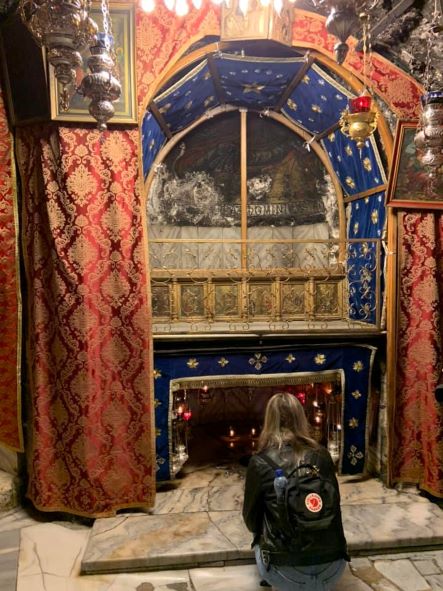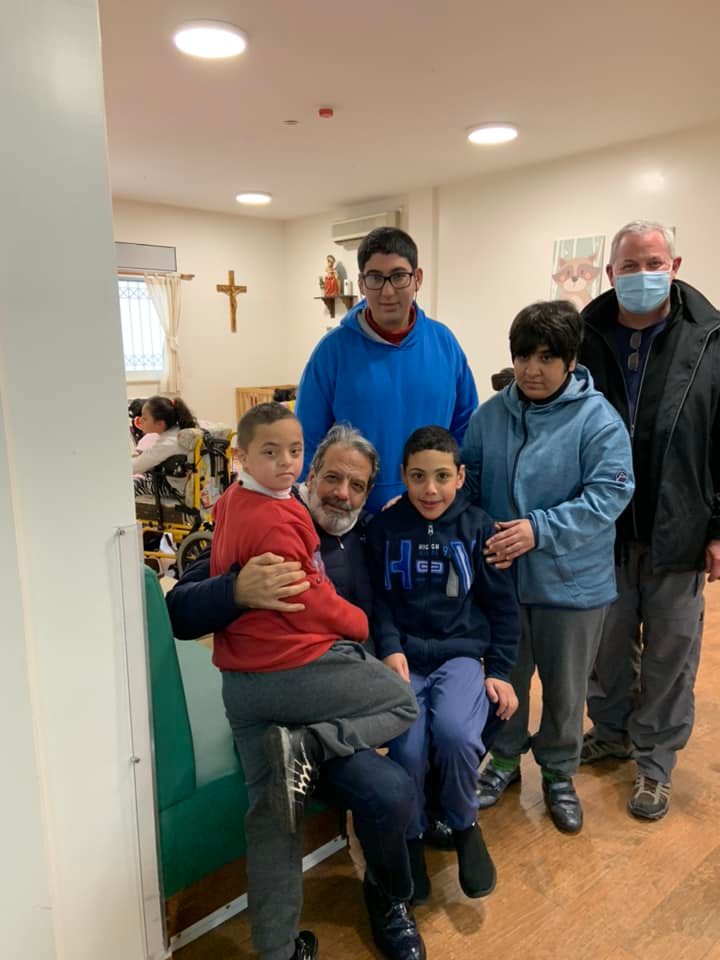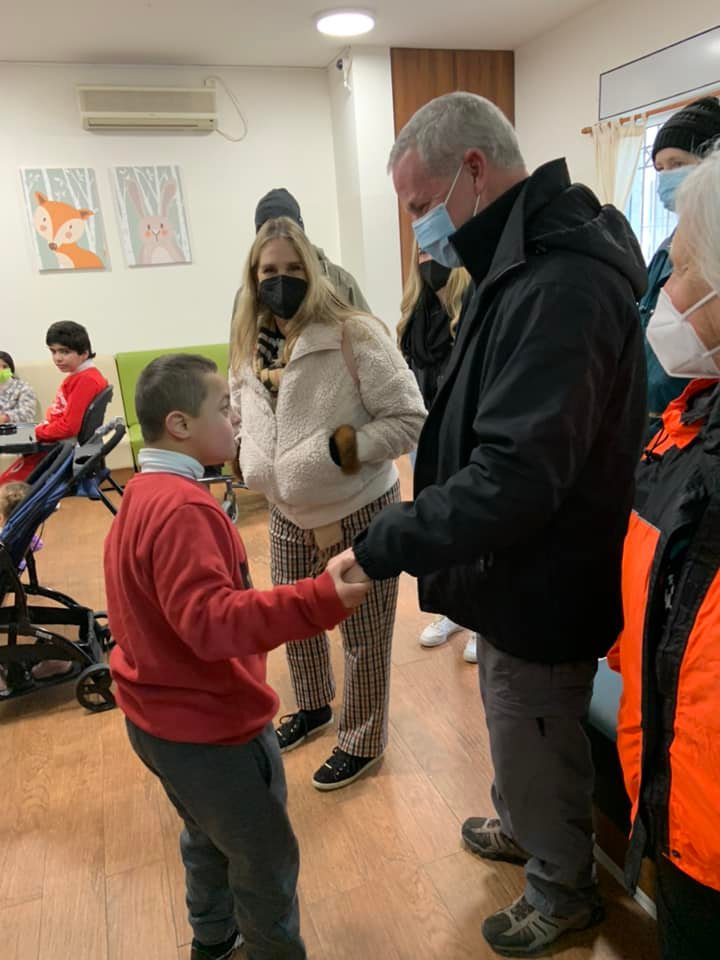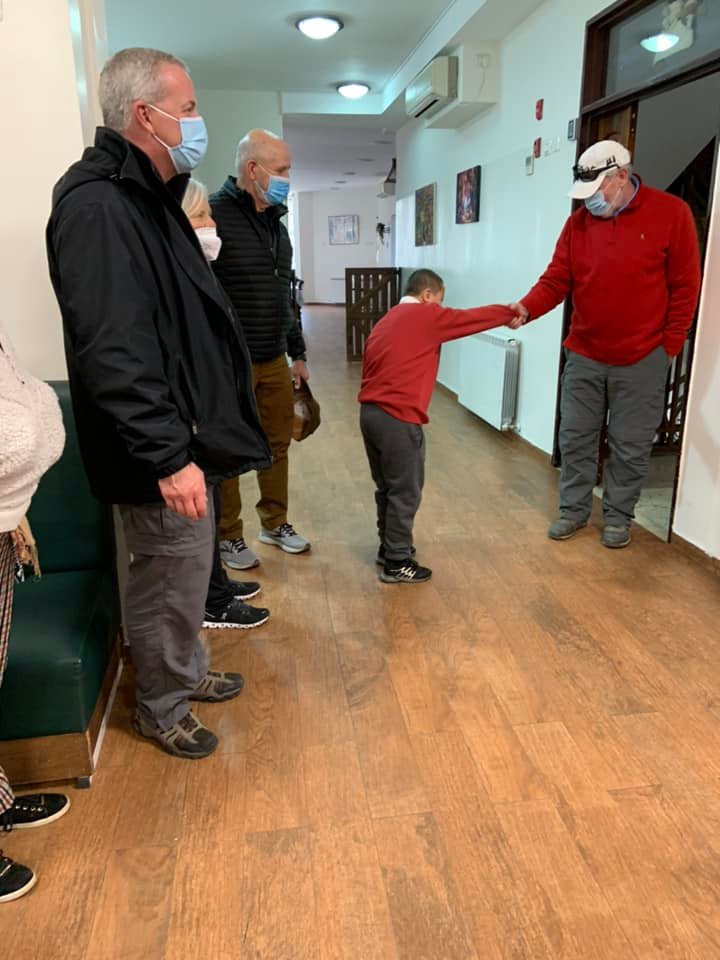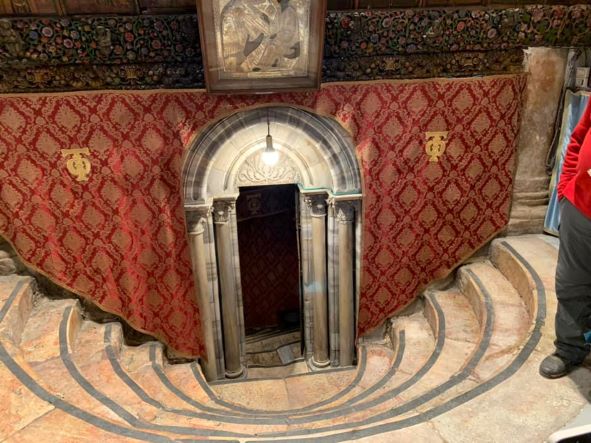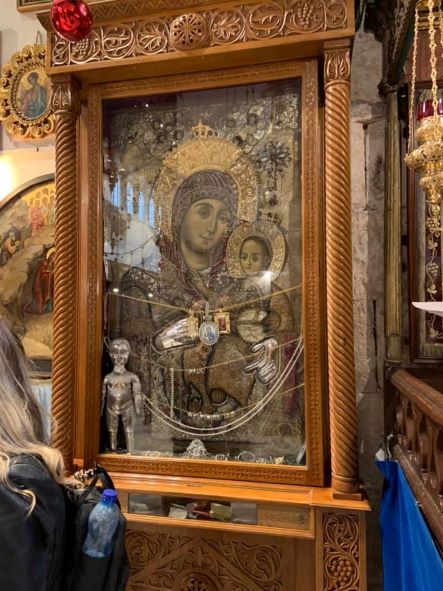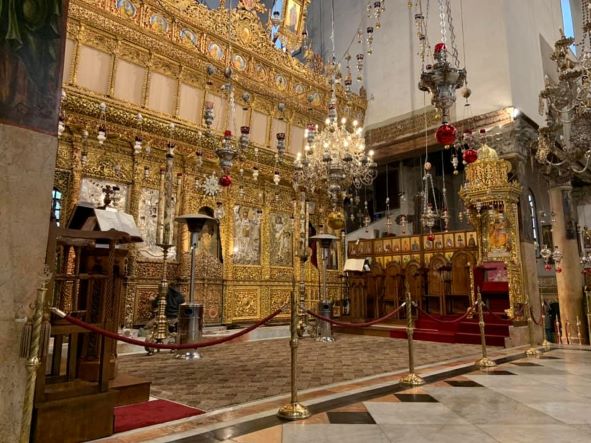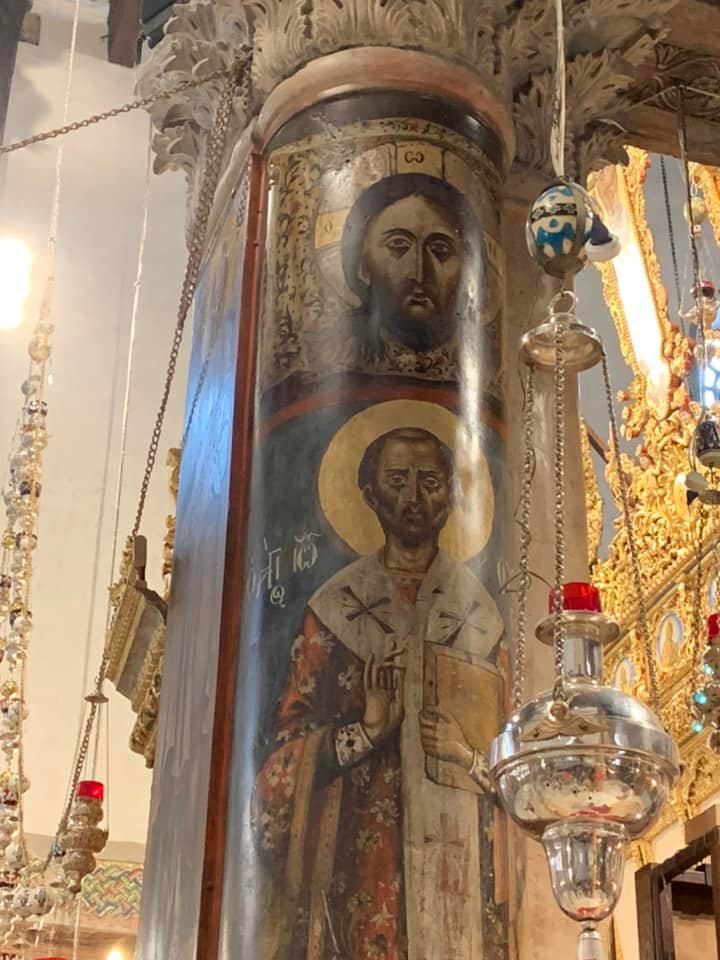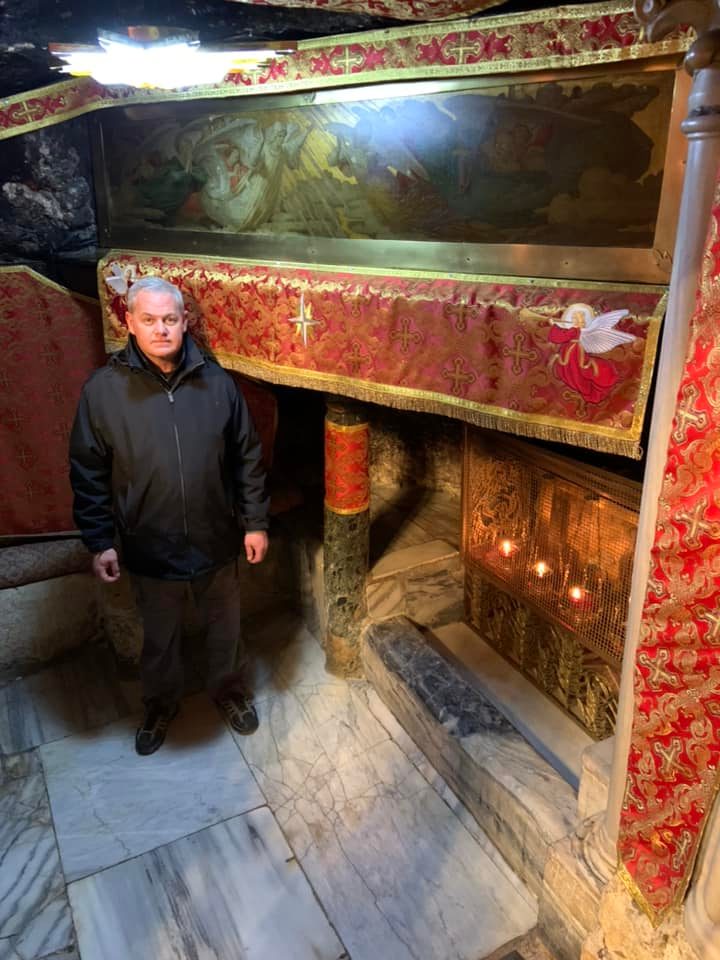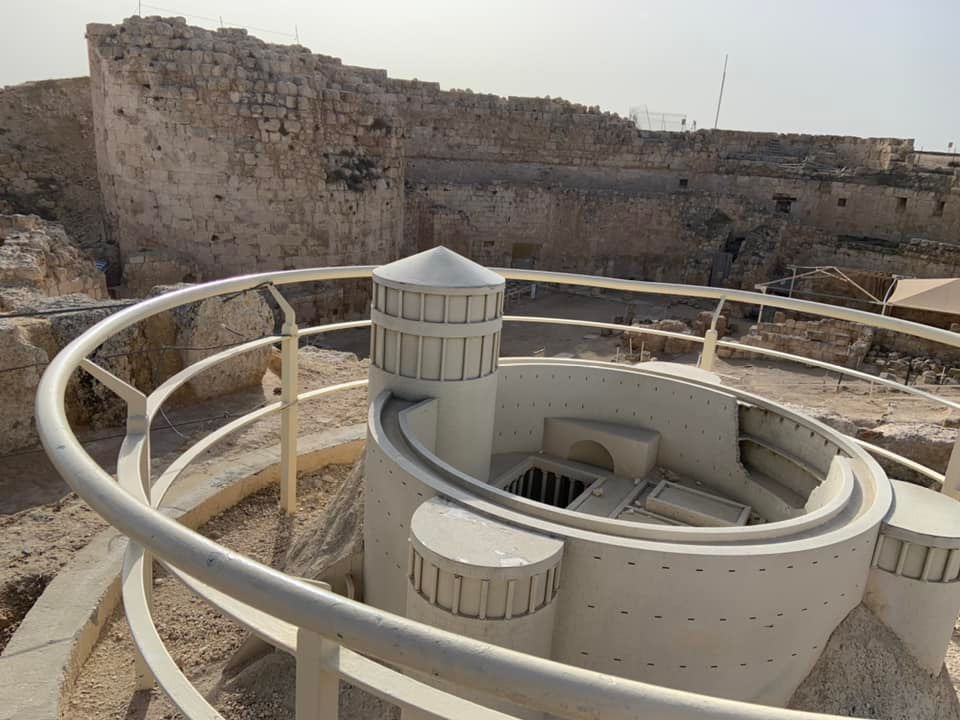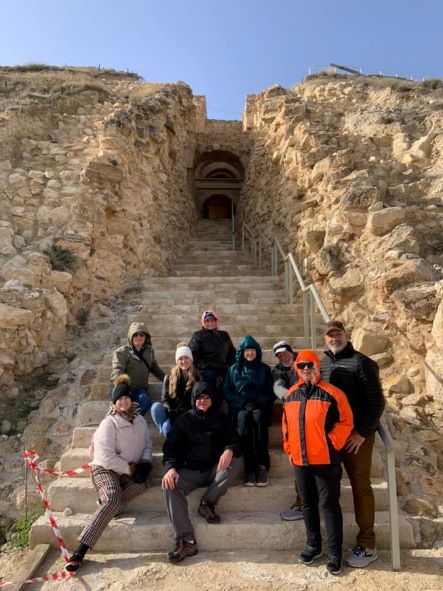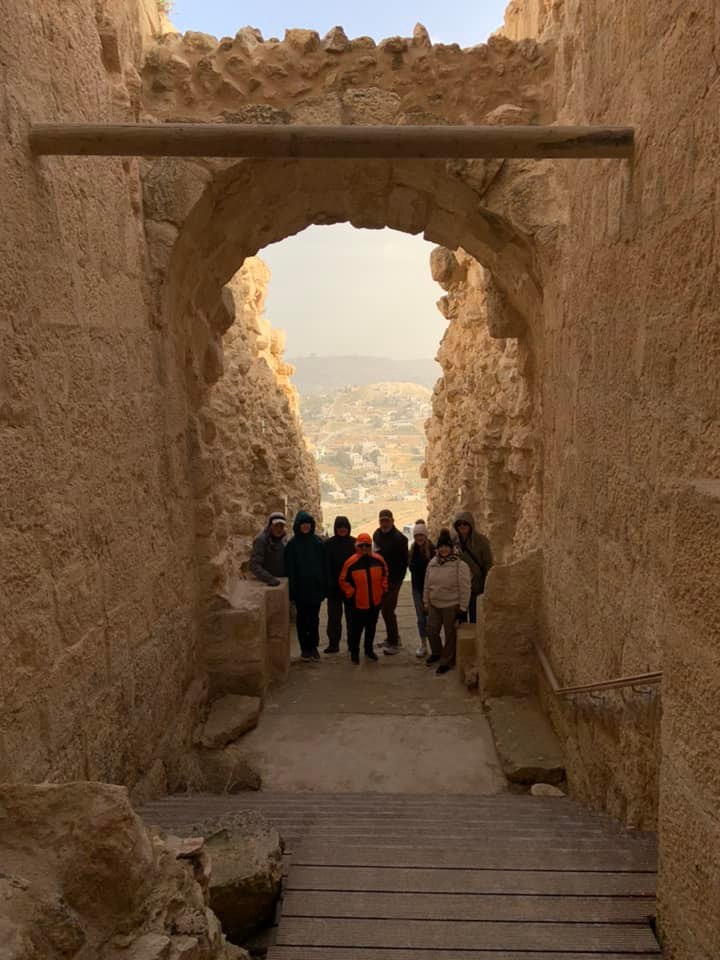Although the forecast was for rain in Bethlehem, we didn’t get any. The temperature was in the forties, but we had sunshine for much of the day. Because we spent the day in and near Bethlehem, our time on the bus was minimal and our time spent seeing and doing was great.
We started at Herodium, the palace-fortress built by Herod the Great in the first century BC. The palace was built inside a small mountain that was made larger by moving another small mountain on top of it. (Jesus’ reference to “moving mountains” is likely connected to the enormous effort involved in this project.) It is a magnificent archaeological site and also the place of Herod’s burial. His tomb has been excavated and is visible there.
Next, we traveled to Shepherd’s Field where we could see the fields and pastures of Bethlehem from an overlook, have teaching and devotional time in a shepherd’s cave, and see powerful murals depicting events of the night of Christ’s birth in a small church. We learned about the levitical shepherds who raised the sheep used in the Temple sacrifices in Jerusalem, just 5 miles away. These shepherds were not lowly social outcasts or marginalized workers. They were most likely Levites (the priestly tribe) entrusted with the sacrificial animals—this was the key connection to the angels’ announcement of the birth of the King to them. Jesus was the lamb of God and the ultimate sacrifice for the sins of the world.
Of course, the next place to visit is the Church of the Nativity in Bethlehem. This is the church built over the cave where the oldest traditions locate the place of Jesus’ birth. It is a magnificent Orthodox Church that has been recently restored such that much of the splendor that had been obscured by centuries of smoke from candles and incense is visible again. Stunning! We took the small staircase down to the cave to see the place marked by a 14-point star. Believe it or not, we were the only group there at the time! We were able to take our time to reflect on the birth of our Savior, offer our personal worship, sing “Silent Night” together, and have a peaceful, unrushed experience there that few pilgrim travelers ever get to see.
We were able to shop at the popular Kando Shop and visit with our friend Shibly Kando. Shibly’s Grandfather had a significant part in discovering and saving the Dead Sea Scrolls. One of the highlights is seeing the Dead Sea Scroll Jar on display. Also, never forget your shopping list or you will be in danger of of forgetting someone. There are so many beautiful items made by local craftsmen for sale. Always make this a stop on your pilgrimage.
Then we headed into town for lunch at our friend Nelly’s restaurant, Nirvana. We have come to know Nelly and her family from dining in her home on previous trips as part of our experience with local Christians in Bethlehem. She now has her own business, and they offered us beautiful hospitality and a delicious Palestinian meal. Her son Firas has written a travel guide called “Follow Me,” which he talked to us about over lunch. It’s written in Arabic, and he is working on an English translation. We can’t wait to read it!
Our last stop was at Hogar Niño de Diós, a special needs orphanage that we brought support and supplies to. We got to make our delivery, hear from the Catholic sisters who care for the children, and even meet some of them. What a blessing to end a blessed day!
